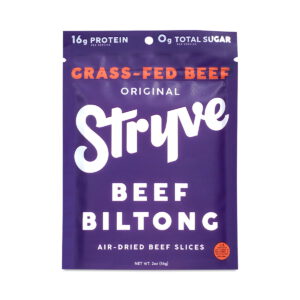- Understanding the Importance of Nutrition
- Quick and Easy Meal Prep Tips
- Smart Snacking Choices
- Balancing Meals with Limited Time
- Staying Hydrated on the Go
- Strategies for Eating Healthy on a Budget
Grocery shopping can often feel like a chore, especially for busy students juggling multiple responsibilities. However, with a little strategy and a clear understanding of what nutritious choices to make, it can become an enjoyable and rewarding experience. When navigating the grocery aisles, start with a list that aligns with your healthy eating goals. This not only saves time but also helps you resist impulse buys that can derail your healthy eating habits.
Consider incorporating fresh, local foods into your grocery routine. Farmer’s markets are a treasure trove of seasonal produce, which is often more affordable and full of flavor compared to grocery store offerings. Plus, purchasing local supports your community and reduces the carbon footprint associated with long-distance food transport. Look for fruits and vegetables that are in season to save money while enjoying peak freshness.
For vegan options, explore plant-based proteins like lentils, chickpeas, and quinoa. These ingredients are not only budget-friendly but also packed with nutrients. For instance, incorporating a variety of beans can enhance your meals with fiber and protein, sustaining your energy levels throughout the day. Additionally, don’t overlook frozen fruits and vegetables. They are picked at peak ripeness and flash-frozen, locking in their nutritional value, making them a convenient and economical choice.
When it comes to fitness foods, consider stocking up on whole grains such as brown rice and oats, which provide sustained energy. Nut butters and seeds are also excellent sources of healthy fats and protein, perfect for a quick snack or as part of a meal. These items are typically versatile and can be used in various recipes, from smoothies to energy bars.
As you shop, pay attention to labels for organic options. While organic products can sometimes be pricier, choosing organic for certain items, particularly the “Dirty Dozen”—a list of produce known to have high pesticide residues—can be a wise investment for your health. Always prioritize buying organic for these essential items: strawberries, spinach, and apples. They can significantly lower your exposure to harmful chemicals.
Online shopping has gained popularity for its convenience, especially for those with hectic schedules. However, there are safety tips to keep in mind. Always use secure payment methods, and if possible, shop from reputable sites. Look for ratings and reviews on products and sellers to ensure quality. When purchasing perishable items, check their delivery schedule to ensure they arrive fresh and safe—this includes looking at shipping methods for perishable items like dairy or meat.
Lastly, don’t forget the importance of meal planning. By dedicating a little time each week to plan your meals, you can ensure that you have all the right ingredients on hand, making your grocery trips more efficient and reducing waste. Plan meals that utilize overlapping ingredients to maximize your grocery budget and keep your meals diverse.
With these tips, you can transform grocery shopping from a mundane task into a rewarding part of your routine, setting the foundation for lifelong healthy eating habits.
Quick and Easy Meal Prep Tips
To streamline meal preparation and fit within a busy student’s lifestyle, incorporating time-efficient techniques can be transformative. One valuable approach is batch cooking, where larger quantities of food are prepared in one session, then portioned out for the week. This method not only saves time but also encourages healthy eating habits by providing easy access to nutritious meals. Here’s a practical approach to get started with batch cooking:
1. Choose Your Recipes Wisely: Opt for recipes that freeze and reheat well, such as soups, stews, casseroles, and grain salads. Dishes that contain whole grains, plenty of vegetables, and a source of protein are ideal.
2. Plan Your Cooking Day: Dedicate a particular day of the week, like Sunday, for meal prep. Ensure you have clean containers ready to store your meals, ideally glass or BPA-free plastic for easy reheating.
3. Follow a Simple Cooking Timeline:
– Start by prepping ingredients. Wash and chop vegetables, measure grains, and season proteins.
– Use multiple cooking methods simultaneously: cook grains on the stove while roasting vegetables in the oven and sautéing proteins in a pan.
– Store meals in single-serving or family-sized portions, depending on your needs.
4. Create a Meal Prep Schedule: Draft a weekly schedule that outlines which meals you’ll prepare on which days. This structure not only simplifies your cooking but also alleviates the stress of deciding what to eat daily.
5. Use Time-Saving Equipment: Consider investing in a slow cooker or an Instant Pot. These appliances can significantly cut down cooking time and allow you to make wholesome meals with minimal effort.
6. Incorporate Versatile Ingredients: Choose ingredients that can be used in multiple meals. For example, grilled chicken can serve as a protein for salads, wraps, or grain bowls. Quinoa can work as a base for various stir-fries and grain salads, allowing for diverse meals without the need for extra shopping.
Here’s a simple comparison of meal prep versus traditional cooking to highlight its advantages:
| Aspect | Batch Cooking | Traditional Cooking |
|---|---|---|
| Time Investment | Single day for multiple meals | Multiple days cooking for one meal |
| Food Variety | Variety in one session, preplanned | Limited variety unless planned |
| Sleep Impact | More free time during the week | Potentially less sleep due to daily cooking |
| Food Waste | Reduced wastage through better planning | Higher chance of spoilage with last-minute cooking |
By investing a few hours into meal preparation each week, busy students can enjoy the benefits of healthy eating without the daily hassle. Convenience and nutrition become easily achievable, allowing more time to focus on studies and personal activities. This process not only supports a balanced diet but also helps establish lasting habits that promote overall well-being, essential for navigating the demanding college years.
Smart Snacking Choices

When it comes to snacking, making smart choices is essential for busy students who need to maintain their energy levels and stay focused on their tasks. Instead of reaching for processed or overly sugary snacks, consider preparing wholesome options that will keep you satisfied and nourished. This not only promotes healthy eating habits but also helps you avoid the dreaded energy slump.
Start by creating a variety of snack packs that you can grab on the go. Here are some suggestions to include in your routine:
- Fresh Fruits and Veggies: Apples, bananas, carrots, and bell peppers are all portable, nutritious snacks. Pair them with a small container of nut butter or hummus for added protein and healthy fats.
- Homemade Trail Mix: Combine nuts, seeds, and dried fruits for a satisfying, energy-boosting snack. Opt for unsweetened or unsalted varieties for a healthier option.
- Whole Grain Crackers and Cheese: Choose whole grain crackers with a piece of cheese for a delightful combination of carbs and protein.
- Energy Bites: Create your own no-bake energy bites using oats, nut butter, honey, and a mix of superfoods like chia seeds or flaxseeds. These can be made in large batches and stored in the fridge for quick access.
- Popcorn: Air-popped popcorn can be a healthy, low-calorie snack. Experiment with seasoning it with herbs or spices instead of butter for an added flavor kick.
As you fill your pantry with these snacks, consider the value of purchasing local and organic products. Local farmers often have great deals on fresh fruits and vegetables. Stocking up on these seasonal options not only supports your community but also introduces you to flavors you might not find in supermarket produce aisles.
For students who prefer vegan options, there are numerous snacks to consider. Try roasted chickpeas, edamame, or gluten-free rice cakes topped with avocado. These choices offer a perfect balance of protein and fiber, keeping hunger at bay between classes.
Budget can be a concern for students, so look for sales or bulk options when purchasing snacks. Buying in bulk often reduces the cost significantly, and items like nuts, seeds, and grains can be portioned out for the week. Additionally, consider making snacks at home rather than buying pre-packaged options, which tend to be more expensive and less healthy.
When shopping online for snacks, ensure that you’re purchasing from reputable sources. Always read reviews or ratings before trying new products. Pay close attention to how items are packaged, especially if they are perishable. Check delivery times and opt for expedited shipping if necessary, to ensure you receive your snacks while they’re still fresh.
Lastly, acknowledging the importance of portion control can be crucial in nurturing healthy snacking habits. Consider using small containers or bags to pre-portion your snacks, which can help prevent overindulging while maintaining the convenience of having healthy options readily available. By implementing these strategies, busy students can continuously fuel their bodies with nutritious snacks that support their active lifestyles.
Balancing Meals with Limited Time
Meal balancing in a busy schedule is about maximizing nutrition while minimizing time and effort. With limited cooking time, it’s vital to strategically select meals that are both filling and provide the necessary nutrients. Focus on creating balanced meals that consist of protein, complex carbohydrates, and healthy fats, ensuring sustained energy throughout the day.
To effectively balance meals, consider the principle of the plate method. Visualize your meal divided into three sections: half of the plate should be filled with fruits and vegetables, one-quarter with lean protein, and the final quarter with whole grains. This distribution not only supports a nutritious diet but also makes it easier to maintain portion control. Wholesome options may include grilled chicken or tofu paired with quinoa and a variety of colorful vegetables, drizzled with a light dressing or topped with avocado.
“It is not about being perfect. It is about making progress.” – Unknown
When time is tight, think about incorporating meals that can easily be prepared in bulk and enjoyed over several days. Dishes such as stir-fries or grain bowls can be customized, making use of whatever ingredients are on hand. Cook grains and proteins in larger quantities and mix them with different vegetables and sauces each day. For instance, bulk-cooked brown rice can be paired with chickpeas one day and with sautéed chicken and broccoli the next, providing diversity without additional cooking time.
Another effective method is to utilize convenience appliances like slow cookers or rice cookers. Set them up in the morning or the night before, allowing for meals to cook unattended. Dishes such as chili, soups, or stews benefit from this approach, as flavors meld together beautifully over time. Add a variety of vegetables and legumes to create nutrient-dense meals that are easy to store and reheat.
Furthermore, enlisting help from pre-prepared items from grocery stores can save valuable time. Look for options such as pre-chopped vegetables, rotisserie chicken, or frozen grains, which can significantly reduce preparation time. Pair these with fresh ingredients to create quick meals without compromising nutritional quality. For example, pre-cooked quinoa can serve as a foundation for a hearty salad, topped with fresh spinach, cherry tomatoes, and a protein source of your choice.
Do not overlook the power of leftovers. Cooking extra portions during your meal prep can provide ready-to-eat lunches or dinners. Invest in quality containers that can safely go from freezer to microwave, making reheating a breeze. This strategy ensures that healthy eating remains accessible even when your schedule is packed.
Incorporating snacks can also play a critical role in balancing meals throughout the day. Choosing nutrient-dense snacks between meals can stabilize blood sugar levels and prevent overeating during main meals. Healthy options such as Greek yogurt paired with fruit, or a handful of nuts with a piece of fruit, can keep you energized and focused during study sessions.
By prioritizing meal balance, even the busiest students can cultivate habits that support both their academic and physical health. Preparing ahead and thinking strategically about food choices will help in maintaining those necessary nutrients without dedicating excess time, fostering a sustainable approach to healthy eating.
Staying Hydrated on the Go
 Staying hydrated amidst a packed schedule is crucial for busy students, as water plays a vital role in maintaining energy levels, supporting cognitive function, and promoting overall well-being. Given the demands of academic life, it’s easy to overlook hydration. However, simple strategies can seamlessly integrate hydration into your daily routine, ensuring that you remain both energized and focused.
Staying hydrated amidst a packed schedule is crucial for busy students, as water plays a vital role in maintaining energy levels, supporting cognitive function, and promoting overall well-being. Given the demands of academic life, it’s easy to overlook hydration. However, simple strategies can seamlessly integrate hydration into your daily routine, ensuring that you remain both energized and focused.
Carrying a reusable water bottle is an effective way to prioritize hydration throughout the day. Not only does this reduce plastic waste, but it also serves as a constant reminder to drink water. Invest in a high-quality insulated bottle that keeps drinks cool or warm for hours, making it convenient to enjoy throughout classes, study sessions, or even during workouts.
Incorporating fruits and vegetables with high water content into your meals and snacks can further boost hydration. Foods like cucumbers, watermelon, oranges, and strawberries can significantly contribute to your daily water intake. Prepare refreshing salads or fruit bowls that are not only delicious but also serve as a source of hydration, adding variety to your diet while keeping you cool and revitalized.
Set specific hydration goals to help maintain your water intake. One practical approach is the “8×8 rule,” which advocates drinking eight 8-ounce glasses of water daily. To track your progress, consider using marking lines on your water bottle that indicate where you should be at different times of the day. This visual guide can transform hydration from an abstract concept into a tangible part of your daily routine.
For those who find plain water boring, exploring infused waters can add a burst of flavor without adding sugar or calories. Mix in herbs like mint or basil, or fruits such as lemon, lime, or berries, for a refreshing twist on hydration. Preparing large batches of infused water in advance can make it easy to grab from the fridge whenever you’re thirsty.
Watch for signs of dehydration that can go unnoticed amid a busy lifestyle. Symptoms like fatigue, dry skin, or headaches often indicate that you need more water. Taking time to pause and hydrate can prevent these inconveniences and enhance your performance, whether studying or participating in extracurricular activities.
Additionally, remember to hydrate before, during, and after physical activities. If you engage in sports or workouts, aim to drink extra water to replenish fluids lost through sweat. Electrolyte-rich drinks can also be beneficial post-exercise, especially if your routine is particularly intense or prolonged.
By embedding these habits into your daily life, you’ll cultivate a proactive approach to hydration that supports your health and academic performance. Healthy hydration strategies can serve as a foundation for lasting wellness, helping busy students meet the demands of their academic journey with clarity and vigor.
- How much water should I drink daily?
- The general recommendation is about eight 8-ounce glasses of water per day, known as the “8×8 rule.” However, individual needs can vary based on factors like activity level and climate, so listen to your body and adjust accordingly.
- What are some signs of dehydration?
- Common signs include thirst, dry mouth, fatigue, dizziness, and dark yellow urine. If you notice these symptoms, it’s important to hydrate immediately.
- Can I hydrate with beverages other than water?
- Yes, other beverages like herbal teas, coconut water, and drinks infused with fruits and herbs can contribute to your hydration needs. However, avoid sugary drinks and excessive caffeine, which can lead to dehydration.
- How can I remember to drink enough water throughout the day?
- Using a reusable water bottle with time markers can remind you to hydrate, or set reminders on your phone at regular intervals to take a sip.
- Are there foods that help with hydration?
- Absolutely! Foods such as watermelon, cucumbers, oranges, and strawberries have high water content and can supplement your hydration throughout the day.
- What should I drink during workouts?
- For most students, water is sufficient for hydration during workouts. If you’re exercising for an extended period or in hot conditions, consider incorporating electrolyte drinks to replenish lost minerals.
- Can drinking too much water be harmful?
- Yes, excessive water intake can lead to a rare condition known as hyponatremia, where your sodium levels drop dangerously low. It’s important to drink water in moderation and listen to your body’s signals.
Strategies for Eating Healthy on a Budget
Grocery shopping on a budget can often be a balancing act, especially for busy students looking to maintain healthy eating habits without breaking the bank. However, with the right strategies in place, you can enjoy nutritious foods while keeping your expenses in check.
Start by planning your meals and creating a shopping list before you head to the store. This not only helps you stay focused but also prevents impulse purchases that can quickly add up. Stick to the perimeter of the grocery store where fresh produce, meats, and dairy are usually located, avoiding the processed foods found in the aisles. This is where you’ll find the healthiest options that are typically more budget-friendly.
Focus on Whole Foods: Buying whole foods such as fruits, vegetables, whole grains, and legumes can be significantly cheaper than processed alternatives. For example, dried beans are not only less expensive but are also a great source of protein and fiber compared to canned versions. Here are some budget-friendly staples to consider:
- Dried or canned beans (black beans, kidney beans, chickpeas)
- Whole grains (brown rice, quinoa, oats)
- Seasonal fruits and vegetables, which are often cheaper at local markets
- Nut butters (look for natural options with minimal ingredients)
- Frozen fruits and vegetables, which are picked at peak ripeness and can be more affordable
Consider Bulk Buying: Purchasing items like grains, oats, nuts, and seeds in bulk can save you money in the long run. Many grocery stores have bulk bins where you can buy as much or as little as you need, allowing you to adjust portion sizes depending on your meal plan.
Explore Local Produce: Farmer’s markets are an excellent place to find fresh and often cheaper produce compared to traditional supermarkets. Many local farmers sell their goods at lower prices, and buying in season helps further cut costs. You might discover new fruits and vegetables while enjoying the vibrant atmosphere of local markets.
Embrace Plant-Based Proteins: Incorporating more plant-based proteins into your diet can not only be nutritious but also budget-friendly. Options like lentils and chickpeas are generally cheaper than meat and are packed with essential nutrients. They can easily be added to soups, salads, and stir-fries for a filling meal.
Be Cautious of Online Shopping: If you opt for online grocery shopping, ensure that you compare prices across different platforms. Look for any potential service fees and shipping costs that could inflate the overall price. Additionally, keep an eye on expiration dates and check for freshness ratings, especially when ordering perishable items.
Meal Prep to Reduce Waste: Planning and prepping meals ahead of time not only saves you time during the week but also helps avoid food waste. When food goes bad, it can be a significant loss to your budget. To maximize your purchases, plan meals that use overlapping ingredients to create variety without needing extra groceries.
By implementing these strategies into your grocery shopping routine, you can cultivate healthy eating habits even on a budget. Making informed choices while remaining mindful of your expenses can lead to both nutritious meals and substantial savings.
New Customers Offer!
Free Gift for the new customer
$24 Value, When You Subscrib Visit Thrive Market












